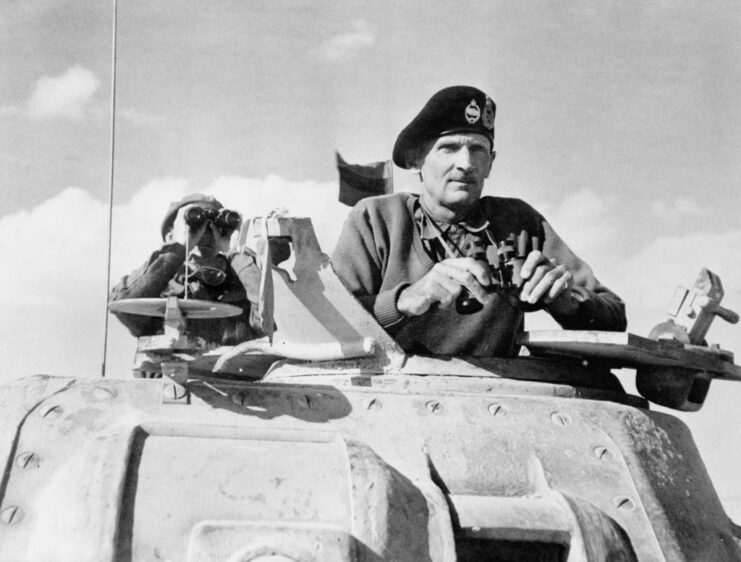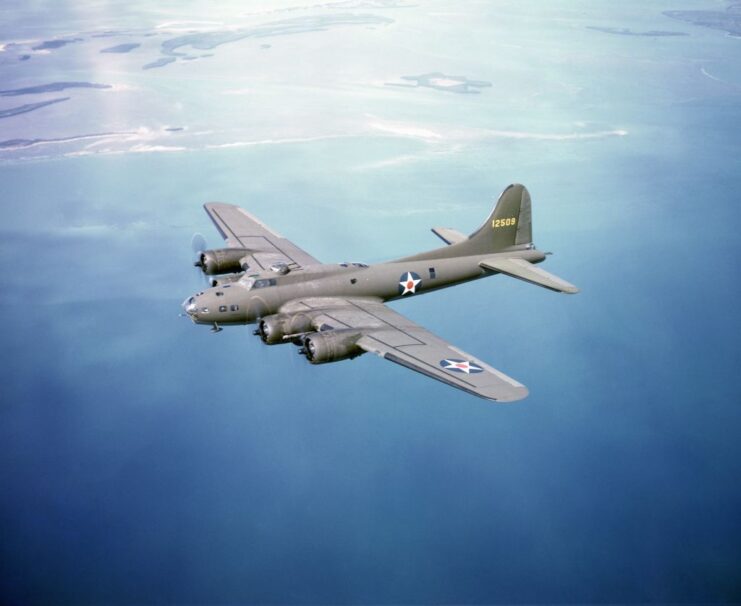War isn’t normally a time for playing games and making bets, but that’s exactly what happened in 1943 between Gen. Dwight D. Eisenhower and Gen. Bernard Montgomery. While Eisenhower honored the bet, providing Montgomery with a Boeing B-17 Flying Fortress, he wasn’t pleased that his British ally accepted the bomber. It also annoyed another man: Gen. George S. Patton.
Bernard Montgomery in North Africa

It was 1942, and Bernard Montgomery was battling Generalfeldmarschall Erwin Rommel across the arid expanse of North Africa. While the Allied forces were pushing the German field marshal back, it was costing them dearly, in both men and resources.
To ensure Rommel was constantly on the back foot, Montgomery wanted more troops and equipment brought in. Other Allied countries shared this desire, as they wanted to secure North Africa. Doing so would enable them to comfortably and effectively launch the invasion of Italy.
Operation Lightfoot

This was the reasoning for Bernard Montgomery’s Operation Lightfoot. Launched late on October 23, 1942, it was designed to knock Erwin Rommel out of North Africa, once and for all. Months of deception had fooled the Germans, allowing the allies to keep where the operation would take place a secret. This was done through fake ammunition dumps, dummy tanks and supply trucks.
At 9:40 PM, an enormous 1,000-gun artillery barrage marked the beginning of the assault. Thousands of troops and hundreds of tanks advanced toward the Germans, causing them to retreat in a panic. Not long after the attack began, Operation Torch brought 73,000 Allied soldiers onto Africa’s northern shores to push the Germans east.
The Allies and Axis powers clashed, while George Patton and Montgomery raced each other to liberate cities and territories. They were making excellent progress, but Dwight D. Eisenhower wanted more. A couple of months into the offensive, he sent Maj. Gen. Walter Bedell Smith, his chief of staff, to visit the British general at his headquarters.
Betting a Boeing B-17 Flying Fortress

It was during this meeting that Bernard Montgomery asked about being given a B-17 Flying Fortress to use as his own personal transport aircraft. According to Walter Bedell Smith, he jokingly said to Montgomery that, if he was able to liberate the Tunisian city of Sfax by April 15, 1943, his wish would be granted.
While Smith apparently meant this as a lighthearted joke, for Montgomery, it was game on.
The British general beat the deadline by five days, capturing Sfax on April 10. Immediately after, he requested that Dwight D. Eisenhower honor the agreement, which he did, sending Montgomery a B-17 and a crew to operate it.
George Patton wasn’t happy about the bet

A total of 12,731 B-17 Flying Fortresses were built during World War II, so Bernard Montgomery receiving one doesn’t seem like it would be an issue. However, the move caused unrest among the Allies’ most critical commanders.
Dwight D. Eisenhower was disappointed that Montgomery even accepted the aircraft, as the bombers were desperately needed for missions at a time when losses were extremely high. Meanwhile, George Patton was furious that his fellow American general gave the Montgomery a personal bomber as transport, while he was stuck hitching any ride possible to travel around.
More from us: HMS Glowworm (H92) vs Admiral Hipper: A Daring Battle in the North Sea
Want to become a trivia master? Sign up for our War History Fact of the Day newsletter!
However, none of this mattered in the end. The B-17 was damaged in a crash landing just a month after Montgomery received it, and Eisenhower didn’t replace it.
